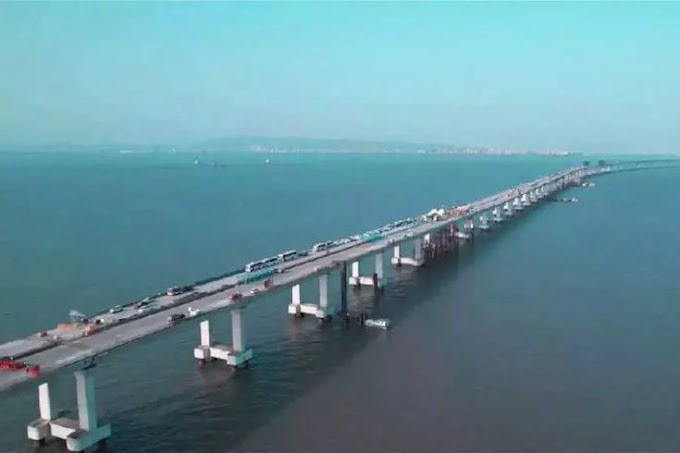The six-lane trans-harbour bridge is 21.8 km long with a 16.5 km sea-link; Atal Setu shows India’s infrastructural prowess, says PM as he lays foundation stone for projects worth ₹12,700 crore; says government’s vision is to improve ease of mobility of citizens by strengthening transport infrastructure
construction:
The bridge is constructed by the Border Roads Organization, IRCON, Infinity and SP Singla Constructions Pvt Limited.
MTHL, India’s longest sea bridge covering 21.8 km out of which 16.5 km is over the sea, is expected to see the movement of more than 70,000 vehicles every day.
Unveiling the six-lane Atal Setu on Friday, Prime Minister Narendra Modi said: “The inauguration of Atal Setu shows India’s infrastructural prowess and underscores the country’s trajectory towards a ‘Viksit Bharat’. This project employed around 17,000 labourers and 1,500 engineers while also creating employment opportunities in the transport and construction industries.”
The PM also laid the foundation stone for multiple development projects worth more than ₹12,700 crore in Navi Mumbai, in sectors including road and rail connectivity, drinking water, gems and jewellery and women empowerment.
Atal Setu is the picture of developed India. This is a glimpse of what a developed India is going to be like. In a developed India, there will be facilities for all, there will be prosperity for all, there will be speed and there will be progress. In developed India, distances will be reduced and every corner of the country will be connected. Be it life or livelihood, everything will go on continuously, without interruption. This is the message of Atal Setu," PM Modi said after inaugurating the bridge and laying the foundation stone for several other developmental projects in Navi Mumbai.
Will not be allowed on MTHL.”
Toll charges:
Travellers using the bridge will have to pay a one-way toll of ₹250, said the government, adding that it anticipates an average of 70,000 vehicles daily on the MTHL. Traffic projections by the MMRDA estimate over 1.33 lakh vehicles at the Sewri-Shivaji Nagar/Chirle interchanges by 2032, projected to surpass 2 lakh vehicles by 2042








